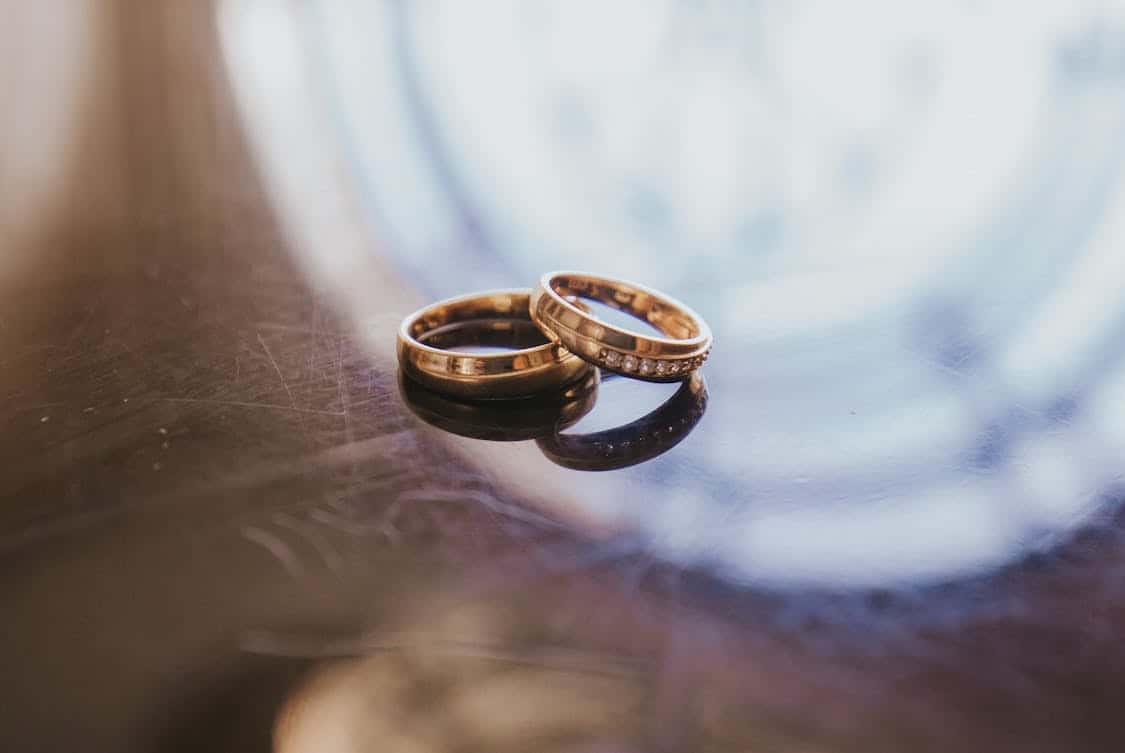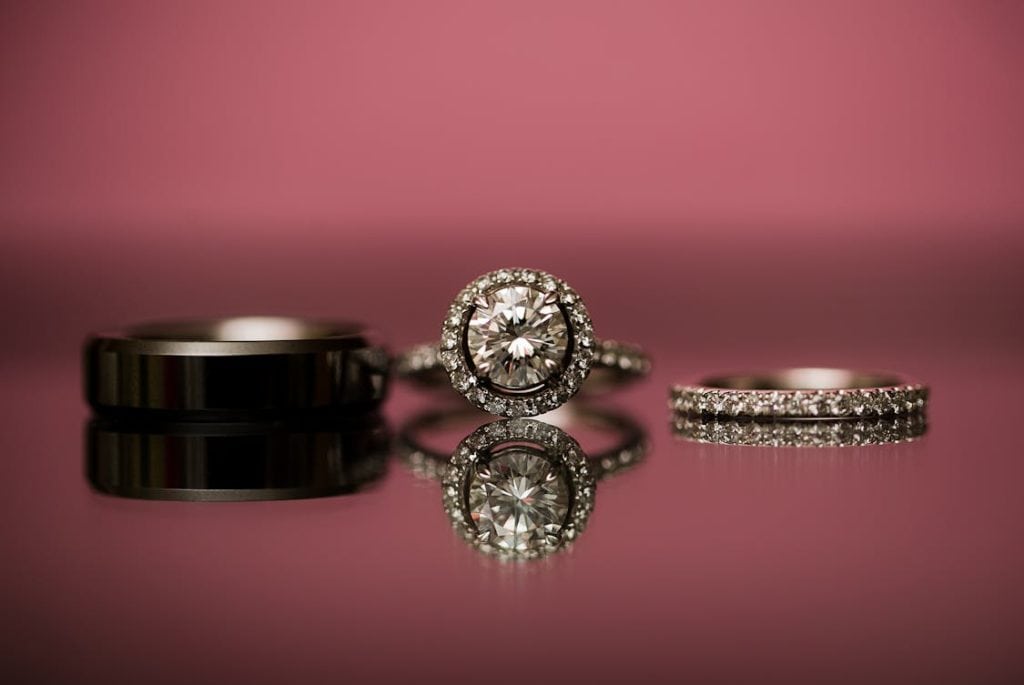Selecting the right wedding band is one of the most significant decisions you’ll make during the wedding planning process. The metal you choose not only influences the ring’s aesthetic but also its durability, maintenance, and comfort.
With so many options available, understanding the characteristics of each metal can help you make a choice that resonates with your style and values.
Understanding Different Metals
Wedding bands can be made from a variety of metals, each offering distinct features. Common materials include platinum, gold, white gold, palladium, tungsten, and titanium.
Each has its own unique look and feel, as well as different levels of durability.
Platinum: The Premium Choice
Platinum is often regarded as the most prestigious choice for wedding bands. This metal is naturally white, hypoallergenic, and extremely durable. It’s denser than gold, which adds a sense of weight and substance to the ring.
Although its price point is usually on the higher end, many couples consider it an investment worth making. The timeless elegance of platinum speaks volumes; it complements both traditional and modern designs beautifully.
Gold: A Classic Option
Gold remains a classic choice for wedding bands, available in several hues: yellow, white, and rose. Yellow gold is the traditional favorite, known for its warm glow. White gold, mixed with alloys like nickel, offers a sleek and contemporary look, while rose gold provides a romantic feel with its pinkish tones.
Gold is measured in karats, with 14k and 18k being the most popular. A higher karat means more gold content, which can enhance its beauty but may also make it softer and more prone to scratches.
White Gold: The Modern Alternative
White gold has become increasingly popular in recent years. It offers a similar aesthetic to platinum but at a more affordable price. Its shiny surface is achieved through rhodium plating, giving it a brilliant finish.
However, over time, the plating can wear off, necessitating occasional re-plating to maintain its luster. If you’re leaning toward white gold, be sure to weigh the long-term care involved.
Palladium: The Hidden Gem
Palladium, part of the platinum family, has gained traction as a wedding band material. It’s naturally white and doesn’t require plating, making it a low-maintenance option.
Palladium is lightweight and hypoallergenic, which adds to its appeal. Although lesser-known than its counterparts, its unique characteristics make it an excellent choice for those looking for something a bit different.
Alternative Metals: Tungsten and Titanium

While traditional metals dominate the market, alternative options like tungsten and titanium are gaining momentum. These modern choices offer distinct benefits, especially for those with active lifestyles.
For a comprehensive selection of durable and stylish rings made from these materials, we recommend browsing MensWeddingBands.com, where craftsmanship meets variety.
Tungsten: Tough as Nails
Tungsten carbide is one of the hardest metals used for wedding bands. Its scratch-resistant surface makes it an excellent choice for those who work with their hands or lead an active lifestyle.
Tungsten rings come in a variety of finishes and styles, allowing for personalization. However, they are brittle, meaning that they can crack or shatter under extreme pressure. This is a key consideration if you choose this rugged material.
Titanium: Lightweight and Durable
Titanium offers an impressive strength-to-weight ratio, making it a favorite for active couples. It’s lightweight, hypoallergenic, and highly resistant to scratches and tarnishing.
Its natural gray hue provides a modern look, while various finishes can add texture and personality. Titanium can also be anodized to create a range of colors, giving you an opportunity to express your style creatively.
Factors to Consider When Choosing Metal
Choosing the right metal involves more than just aesthetics. Several factors can affect your decision, including lifestyle, budget, and maintenance.
Lifestyle Considerations
If you lead an active lifestyle, you might want to choose a metal known for its durability. Tungsten or titanium can be ideal for individuals who work with their hands or have jobs that could damage softer metals.
For those working in office environments, the traditional elegance of gold or platinum may be perfectly suitable.
Sensitivity and Skin Reactions
Some individuals may have allergies or sensitivities to certain metals. Nickel, commonly used in white gold, can cause skin irritation for some people. If you’re prone to reactions, consider hypoallergenic metals like platinum or palladium.
Budget: Finding Balance
Your budget will undoubtedly influence your choice of metal. Platinum is the most expensive, while titanium and tungsten are often more budget-friendly. Gold, depending on its karat, can also range significantly in price.
Finding a balance between what you desire and what you can afford is essential.
Maintenance and Longevity
Different metals require varying levels of upkeep. Platinum, though durable, can lose its finish over time and may need polishing. Gold rings, especially those with lower karat content, may scratch more easily.
Alternatively, tungsten and titanium have low maintenance requirements, making them appealing options for busy couples.
Customization: Making It Yours
Once you’ve settled on a metal, think about how to personalize your ring. Many jewelers offer a range of options for customizing wedding bands.
Whether it’s engraving a meaningful phrase or selecting a unique finish, personal touches can turn a simple band into a cherished symbol of your love.
Engravings: Adding Meaning
Engravings can carry significant emotional weight. Consider inscribing a date, initials, or a meaningful message on the inside of the band.
This subtle touch can make your wedding ring feel even more special, creating a connection that transcends the years.
Unique Designs: Stand Out from the Crowd
Many couples seek unique designs that reflect their personalities. Whether you choose a modern geometric shape or a classic vintage style, a well-designed band can speak volumes.
Explore various patterns, textures, and finishes to find something that resonates with your unique taste.
Testing the Waters: Trying Before Buying
Shopping for a wedding band can be an overwhelming experience. To make the process smoother, take your time and explore different styles and metals.
Visiting local jewelers allows you to try on various options and get a feel for what works best.
Ring Sizing: Get It Right
Getting the correct ring size is crucial. Fingers can swell and shrink due to various factors, such as temperature and time of day. It might be wise to get sized multiple times or consult with a professional jeweler to ensure your ring fits perfectly.
Take Your Time
Don’t rush the decision. Choosing a wedding band is a significant moment; take the time to weigh your options without pressure. Discuss your preferences with your partner, and get their input.
This shared experience can enhance your connection, making the decision even more meaningful.
Finding the right wedding band metal encompasses a blend of personal preference, lifestyle considerations, and practicalities. By exploring various options and understanding the characteristics of each metal, you’ll be better equipped to choose a ring that perfectly represents your love and commitment.




